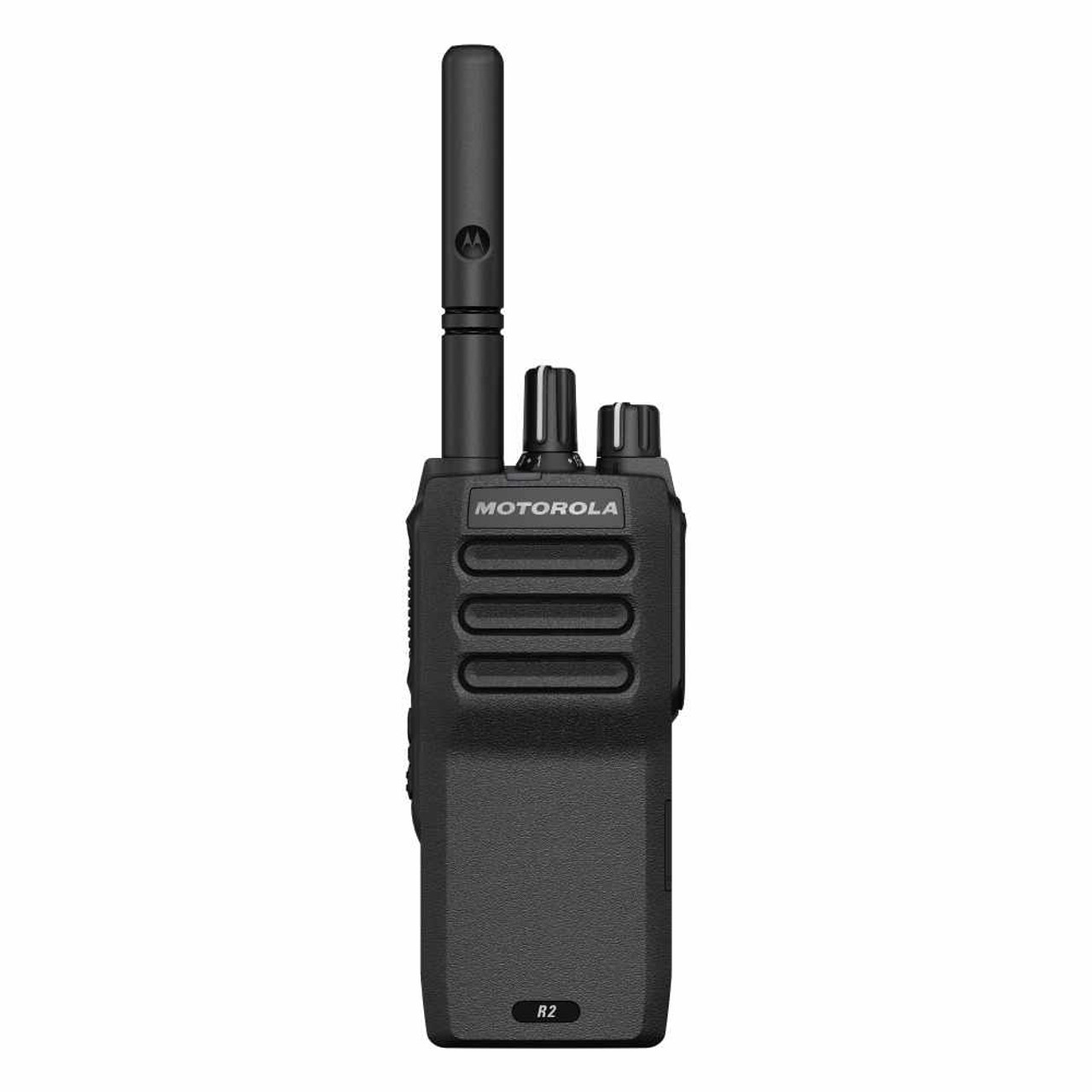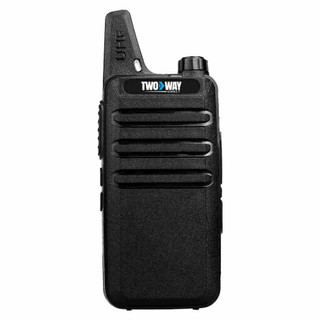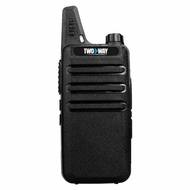5 Questions to Ask Before Buying Two-Way Radios For Business
Posted by Two Way Direct on 18th Jul 2025
With the world changing rapidly in the business sector, efficient communication isn't a luxury but the key to effectiveness. The availability of smartphones has surely brought extensive connectivity, but nothing compares to the instant, dependable, and group-focused communication that the two-way radios offer.
With so many options on the table, merely choosing a radio based on brand or a couple of features alone may end up giving you a less-than-perfect answer. To empower your team and make your investment worthwhile, you'll need a strategic solution.
So, today, we will take you through five key questions to ask yourself before buying two-way radios for your business. Let’s move toward those questions to help you make the right decision.
5 Questions You Should Ask Before Getting Two-Way Radios for Your Team
Here are the 5 questions you need to ask before buying a two-way radio system for your business. This will help you make a well-informed decision that precisely fits your operational requirements and integrates flawlessly into your current operations.
1. What is Your Operational Environment?
The physical environment in which your team is working is perhaps the most important determinant of the appropriate two-way radio.
A. Indoor vs. Outdoor Use
- Predominantly Indoor Environments – If your team spends most of their time in indoor structures, whether it's a multi-level office building, a large warehouse, a hospital, or a hotel, the challenges you'll encounter will include dense walls, high floors, and heavy construction materials.
- In such cases, UHF (Ultra High Frequency) radios are usually the better option. Their shorter wavelength is well-suited to penetrate and bounce off solid objects.
- Predominantly Outdoor Environments – For groups that work in open, unobstructed spaces like large construction sites, farmlands, or sea environments, VHF (Very High Frequency) radios will usually work best.
- The greater wavelengths of VHF are better at going longer distances over flat, open terrain and can easily penetrate slight foliage such as trees and bushes.
- Mixed Environments – Most companies exist in a combination of indoor and outdoor environments. Where this is the case, a careful evaluation must be done.
- Occasionally, one frequency band may be adequate using repeaters or a hybrid mix of mobile radios and base stations as another option.
B. Terrain and Obstacles
In addition to just indoor or outdoor, take into account the particular terrain and obstacles:
- Flat vs. Hilly Terrain – Radio signals are severely affected by significant changes in elevation. UHF radios, with their reflective capability, can sometimes handle hilly terrain better than VHF, which requires a straight line of sight.
- Dense Foliage – Although VHF is usually superior with light foliage, very dense forests are still able to block signals.
- Urban vs. Rural – Highly populated urban spaces with many buildings and possible signal interference overwhelmingly support UHF. Rural open spaces with few obstructions are where VHF excels.
C. Durability and Environmental Ratings
The ruggedness of your radios is vital for challenging working conditions. IP (Ingress Protection) ratings show a radio's immunity to dust and water. The first figure indicates dust protection (0-6), and the second water protection (0-8). An example is:
- IP54 – Protected against dust entry enough to prevent interference with the operation of the equipment and against splashing water from any direction.
- IP67 – Dust-proof and waterproof for immersion in water up to 1 meter for 30 minutes.

2. What is Your Required Communication Range, Coverage, and Technology?
Understanding how far and broadly your team must communicate, and which technology works best for it, is essential to building an efficient radio system.
A. Distance Requirements
- Short-Range – In cases where communication is limited to a local area, such as within one retail outlet or a small office, the lower power output radios (e.g., 1-2 watts) may suffice.
- Medium-Range – For large buildings, multiple units on a campus, or wide construction sites, higher power output radios (generally 4-5 watts for business versions) will most likely be required. Even in this case, the obstacles of the environment can reduce range, and repeaters must be used.
- Long-Range / Nationwide – For companies with roaming crews that have large geographic coverage areas, like trucking fleets or field service techs, standard radio frequencies do not have the reach.
- PoC radios or Nationwide PTT radios use available cellular networks (such as 4G LTE and Wi-Fi) to enable an essentially unlimited range of communication.
B. The Role of Repeaters
A repeater is equipment that picks up a radio signal, boosts it, and then retransmits it, essentially stretching the range and enhancing the quality of your radio system. Medium to long-distance communication within a localized area, particularly one with heavy obstructions, is where repeaters prove to be extremely useful.
Strategically located repeaters are able to outperform dead spots, penetrate difficult structures, and greatly increase the overall coverage of both VHF and UHF systems.
C. Analog vs. Digital Technology
- Analog Radios – These are less complex, sometimes cheaper, and offer simple voice communication. Their sound, however, gets worse with distance, causing static and noise.
- Digital Radios – The current standard, digital radios translate voice into data packets, providing cleaner audio across a larger range, improved battery life, and improved radio spectrum efficiency.
- They also open up advanced features such as private calls, group calls, text messaging, GPS location, and better privacy. You can shop from an extensive range of Motorola radios and Hytera digital radios, providing these features.

3. Do your new radios need to communicate with any existing radios?
Making sure that communication between your current radio fleet is seamless is the key to preventing a broken system. If you currently use two-way radios and are pleased with their performance, it's vital to make sure that the new Push-to-talk radios you buy will be able to communicate with them.
Here are some key features that you may want in your new radios.
- Frequency Band (UHF or VHF)
- Technology (Analog or Digital)
- Power Output
- Number of Channels
- Accessory Connector Type
- Battery Type
- Other Key Features (Any special features that must be matched)
4. What is Your Budget and Long-Term Cost of Ownership?
In addition to the cost of the initial purchase of the radios, it's also important to take into account the cost of ownership over time, including expenses that recur and possible hidden costs. A low cost of purchase can easily become high if you do not take into consideration all the variables.
A. Initial Purchase Cost
- Radio Units – This is the individual unit cost of the radios themselves. There can be large differences depending on brand, features, and quality.
- Accessories – Don't overlook necessary accessories such as spare batteries, multi-unit chargers, headsets, earpieces, and belt clips. These can contribute a lot to the total price but are crucial to usability and ongoing use.
- Installation – If your communication system needs repeaters or a complicated system installation, include professional installation fees to guarantee maximum performance and coverage.
B. Licensing Fees
Most two-way radios for businesses use licensed frequencies that require a license from a regulatory agency such as the FCC (Federal Communications Commission). Such licenses entail an application fee and may need regular renewal.
Though there are a few license-free alternatives, such as MURS (Multi-Use Radio Service) for very low power, short-distance use, these generally won't provide the quality or fixed channels required for serious business use.
C. Maintenance and Repairs
Think about how rugged the radios you select are (their IP rating is a good measure here). Consider the cost of replacement parts, repair service convenience, and the warranty offered by the manufacturer.
Spending more on more rugged radios initially can often save you substantial repair or replacement costs in the future, minimizing downtime and workflow disruptions.
D. PoC Service Fees
If you go with Push-to-Talk Over Cellular radios, keep in mind that these radios need a cellular data plan, just like a smartphone. Include the repeated monthly service charges for each unit, as these are recurring operating expenses.
E. Scalability Costs
Is the selected radio system simple enough to grow with your team or as your communications change? Look at systems that permit the addition of extra channels, users, or the simple integration of more repeaters without having to replace everything entirely. Planning for expandability now can avoid future costs in replacement or a lack of capability.

5. What is Your Current or Future Infrastructure?
Purchasing a communications system is an investment in the long term. Selecting a system that can scale and evolve with your company avoids expensive replacements later on and keeps your communications infrastructure performing as your requirements change.
A. Scalability
Is the selected radio system readily expandable as your business increases or your communication requirements shift? How many unique talk groups or channels will be required currently and in the future? Being able to communicate with particular teams or individuals is vital to effective operations, particularly as your team or departmental organization grows.
B. Integration with Other Systems
Do you need to integrate the radio system with other communication devices your company utilizes? Modern digital radios tend to have more sophisticated integration features compared to analog radios, resulting in a more integrated communication platform.
C. Network Availability (for PoC)
Consider carefully the cellular network coverage throughout all the locations your team will work in. Although PoC provides an enormous range, its dependability relies directly upon the strength and presence of the base cellular network. Make sure areas of critical operation have strong coverage.
Bottom Line
Selecting the most appropriate business two-way radios is an important decision that affects your staff's productivity, safety, and efficiency. By carefully considering these five important questions, you can make a well-informed decision.
The "best" radio is not a one-size-fits-all answer; it's the one that exactly meets your specific business needs. For customized advice and specialist knowledge in creating your ultimate communication system, we urge you to browse the wide selection of business two-way radios offered from quality suppliers such as Two Way Direct.
FAQs
1. How many watts do I need for my business radio?
For short range, you can go with 1-2 watts, but for a larger range, you need to have 4-5 watts. More wattage does not always mean better performance, as it also depends on the environment (indoor, outdoor, less-restricted, or lots of obstacles).
2. Can two-way radios be tracked or located?
Yes. Many two-way radios come with GPS tracking capabilities. This can help you get real-time locations of the users even in large and remote areas.
3. What accessories are essential for business two-way radios?
Beyond the radio unit itself, many accessories become essential for an effective performance. These accessories include durable belt clips, chargers, earpieces, headsets, etc.
4. Can I use my radios across multiple buildings or sites?
Yes, you can definitely use a two-way radio across multiple buildings or sites. There are several solutions available for spaces with lots of obstacles or significant spaces.
5. Do two-way radios require a license?
Yes, most two-way radios require a license from a regulatory body such as the FCC (Federal Communications Commission). There are license-free radio services also available, such as MURS (Multi-Use Radio Service) or FRS (Family Radio Service) radios.

